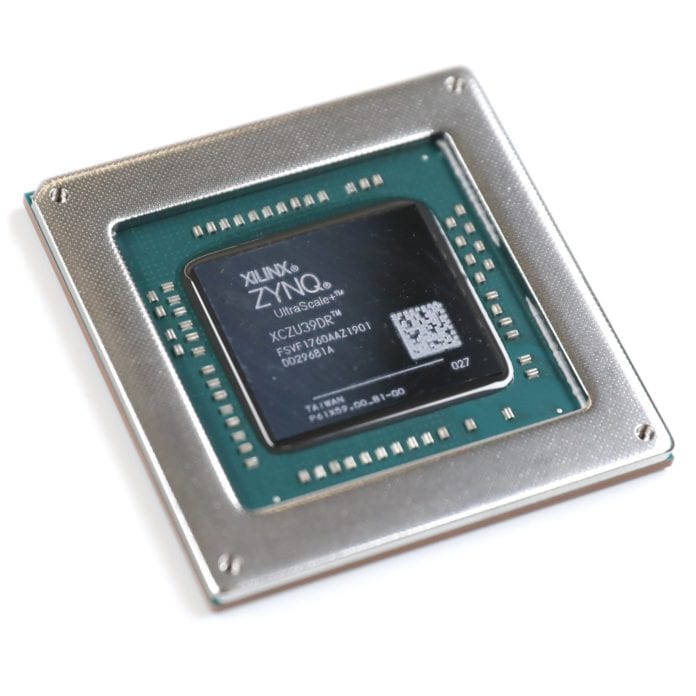Chip company Xilinx is forging ahead with the next two generations of its radio frequency system-on-chip to support 5G deployments, massive multiple-input-multiple-output and advanced cable networks.
The Zync UltraScale+ radio frequency SOC Gen2 and Gen3 can be reprogrammed to target multiple markets — so Xilinx is targeting not just telecommunications with the next-generation SoCs, but aerospace and defense as well as the automotive lidar market, test and measurement equipment, satellite communications and cable networks, according to David Brubaker, product line manager for Xilinx. In the cable space, the company is touting them as a single-chip solution for DOCSIS 3.0 and 3.1, while in wireless networks, the SoCs have the footprint and power parameters to support massive MIMO units/remote radio heads, 5G baseband and serve as IF digital transceivers for millimeter wave-based 5G New Radio, according to Xilinx.
Xilinx called sub-6 GHz spectrum support a “critical need for next-generation 5G deployment.” While 5G deployments at millimeter wave frequencies have been the focus of early deployments in the U.S., 5G trials in the Asia-Pacific region and Europe more frequently utilize sub-6 GHz spectrum such as 3.5 GHz — and Xilinx says that its Zynq UltraScale+ RFSoC Gen 2, with production slated for June of this year, will meet regional deployment timelines in Asia and support 5G NR.
Xilinx said that the chips integrate higher-performance RF data converters in order to enable up to a 50% power and footprint reduction. Brubaker said that Xilinx has also done significant work to improve the thermal performance of its RF SoCs, and that their lidless package allows direct contact with a heat sink in a remote radio head environment.
Other features of the new Xilinx SoC include:
–Direct RF sampling of up to 5 giga-samples per second 14-bit analog-to-digital converters, and 10 GS/S digital-to-analog converters, with both up to 6 GHz of analog bandwidth.
-In the Gen3 SoC, which will be available in the second half of this year, there is full sub-6 GHz direct-RF support, plus an extended mmWave interface. Xilinx said that the Gen3 achieves a 20% power reduction in the RF data converter subsystem, compared to its base portfolio. Gen3, Brubkaer said, was improved upon based on customer feedback in a number of ways, including the support for full sub-6 GHz and the ability to process much wider bandwidths — 25% more than previous capabilities, he said, while also reducing power consumption.
According to Brubaker, Xilinx is already working with a Tier 1 wireless operator that is building 64×64 massive MIMO solutions. Rockwell Collins, he said, has also used Xilinx’s Zync UltraScale+ line in gangs of four to build up MIMO array systems for ground-based or mobile radar. The company’s solutions are also being used in Tier 1 service provider trials for fixed wireless access, he added.
The company will have a Gen 2 demonstration at MWC.

